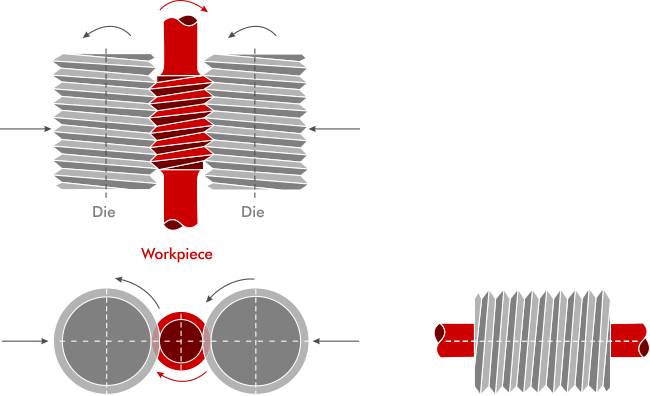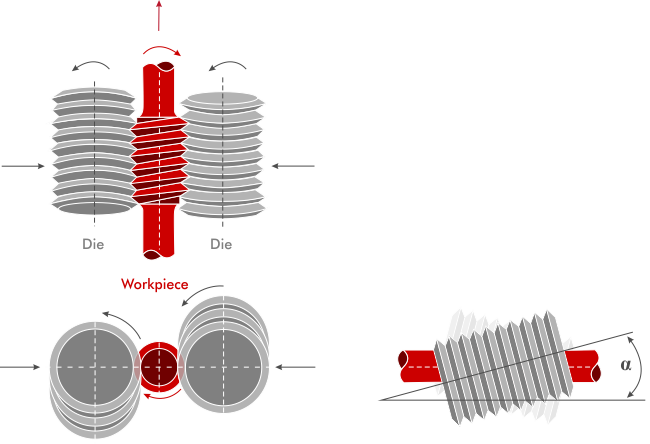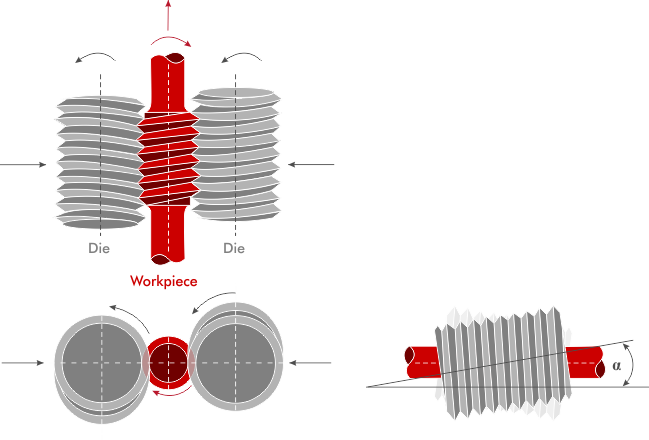Thread Rolling / Profile Rolling
Using the process with two (2) Rolling Dies the workpiece is typically placed on a supporting blade. At least one (1) rolling slide has a feed movement to perform the forming process. Simultaneously the dies are rotating synchronously in contact with the workpiece, whereas the profile will be formed out.
Rolling force Parameters:
- Hardness - the higher, the higher the force
- Deformation - the bigger, the higher the force
- Contact area - the bigger, the higher the force
Infeed Rolling with Circular dies
Infeed thread rolling is based on one parameter: workpiece lead = rolling die lead. This results in a synchron rotational movement of part and dies. No axial movement occurs. Necessary rolling force is defined by thread diameter and length.

Biggest Advantage of infeed rolling process is the Speed. There simply is no faster process to manufacture Threads especially with big sizes.
Rolling of M56x4 Thread on a Stud bolt with a 60-tons Thread Rolling Machine
Throughfeed rolling with Groove Dies
Throughfeed thread rolling is always used when workpiece profile is longer than max. rolling die width.
Throughfeed dies have 3 different areas: Lead-in, Calibration area and Lead-out. The scetch pictures Groove Dies without any lead. Lead angle results from swiveling of dies.

Lead corrected Dies are different from Groove Dies. They have a lead included in profile. Additionally these dies are swiveled. The sum of lead angle of dies and swivel angle = lead angle of workpiece.

With the throughfeed rolling using lead corrected Rolling Dies even smaller machines with medium Rolling force can be used for big threads.
Rolling of a TR 110 Trapezoidal Thread